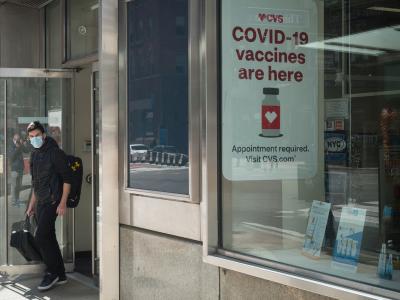Jan 15, 2010 (CIDRAP News) – During a week federal officials set aside to push flu immunization, a new report today reveals that pandemic vaccine uptake is low in two of the top priority groups—those with chronic conditions and healthcare workers.
The report outlining the challenges public health officials face in vaccinating target groups came as federal officials released their latest estimates of pandemic flu cases, hospitalizations, and deaths.
Pandemic influenza continues to decline across the nation, with no states reporting widespread activity and only and only nine reporting regional activity, according the latest surveillance report today from the US Centers for Disease Control and Prevention (CDC). As of yesterday, the CDC said the cumulative total of pandemic vaccine doses made available to states for ordering reached nearly 139 million.
Vaccination survey shows gaps, glimmers
The CDC vaccination report, released in an early online edition of Morbidity and Mortality Weekly Report (MMWR), shows that as of Jan 2, 90% of adults under age 65 with chronic medical conditions that increase their risk of flu complications still had not been vaccinated. Over the past several weeks the CDC has emphasized how vulnerable this group is: three-fourths of adults hospitalized with pandemic flu infections had an underlying condition such as asthma, chronic obstructive pulmonary disease (COPD), or diabetes.
Overall pandemic vaccine uptake approached about 20% of the US population, but about 38% of targeted priority groups had received it. The report is based on two telephone surveys, one conducted between Dec 27, 2009, and Jan 2, 2010, and the other between Dec 1 and Dec 27, 2009.
Vaccine uptake in healthcare workers, slated to receive the very first doses of the vaccine, was also disappointingly low: Only 22% reported having been vaccinated. The number was even lower than for seasonal flu vaccine, which has historically been below 50%.
The survey also showed worrisome signs of racial disparity, even among healthcare workers.
However, the vaccine survey also had some positive findings. For example, vaccine uptake in pregnant women was 38%, which is higher than typically seen for the seasonal flu vaccine. However, the CDC warned that the confidence interval for the uptake number was large and that a separate system is collecting more data on pregnant women to give officials a better estimate of pandemic vaccine uptake.
Pandemic vaccine coverage among children ages 6 months to 18 years was similar to coverage with the 2008-2009 seasonal flu vaccine.
In an editorial note, the CDC authors wrote that the high percentage of unvaccinated healthcare workers shows more efforts are needed to improve flu immunization.
They said that with the now-ample supply of pandemic vaccine, efforts to vaccinate those with high-risk conditions should be strengthened. On Jan 12, as part of National Influenza Vaccination Week, federal officials hosted a Web seminar on flu risks in those with chronic conditions. Speakers pointed out that many of those with underlying conditions, especially those with well-controlled disease, don't see themselves at increased risk and that healthcare providers can play a key role in communicating the benefits of the vaccine.
CDC releases new pandemic numbers
Also today the CDC released another month of data on pandemic flu cases, hospitalizations, and deaths showing moderate increases that it said reflect the national decline in flu activity. The previous estimate, released Dec 10, reflected a sharp rise in case estimates when pandemic flu activity was peaking from mid October through mid November.
In an update that includes data from the middle of November through Dec 12, the CDC estimated that 18 million cases occurred in children up through age 17, leading to 78,000 hospitalizations and 1,180 deaths. For adults age 18 through 64, the agency estimated 32 million cases, 145,000 hospitalizations, and 8,620 deaths.
For older people, who are believed to have some protection from past flu exposures, the new estimates are 5 million cases, 23,000 hospitalizations, and 1,360 deaths.
The numbers are midpoints of ranges of estimates produced with a new method CDC unveiled on Nov 12. The numbers of confirmed cases and related hospitalizations and deaths are far lower, because most people infected, including some who get severely sick, are not tested.
In its online report today, the CDC said the data continue to suggest people younger than 65 are more severely impacted by pandemic flu compared to seasonal flu, which strikes people older than 65 the hardest. However, because severe infections and deaths have occurred in seniors, it recommends that everyone be vaccinated, especially now that vaccine supplies are robust.
Flu activity continues retreat
Last week Alabama was the only state reporting widespread activity, but the CDC's latest surveillance report, for the week ending Jan 9, shows that Alabama experienced only regional activity, along with Georgia, Hawaii, Maine, Nevada, New Jersey, New Mexico, New York, and Virginia.
Other flu indicators also fell, including visits to doctors, hospitalization rates, and the proportion of deaths from pneumonia and influenza, the CDC reported. Seven more pediatric deaths were reported, of which six involved the pandemic virus. (The subtype in the seventh case was undetermined.)
Almost all of the flu viruses analyzed so far were the pandemic H1N1 strain.
One case of a novel influenza A virus infection was reported, a patient from Iowa who got sick with a mild illness in September. Investigators found no human-to-human spread of the swine influenza A (H3N2) isolated from the patient.
The CDC typically receives about one report of a human swine flu case a year. Such cases typically involve exposure to pigs, but investigators said in today's CDC report that the Iowa patient had no known exposure to the animals.
See also:
CDC. Interim results: influenza A (H1N1) 2009 monovalent vaccination coverage—United States, October-December 2009. MMWR 2010 Jan 15;59(early release):1-5[Full text]
CDC estimates of pandemic H1N1 cases, hospitalizations, and deaths Apr-Dec 12, 2009



















